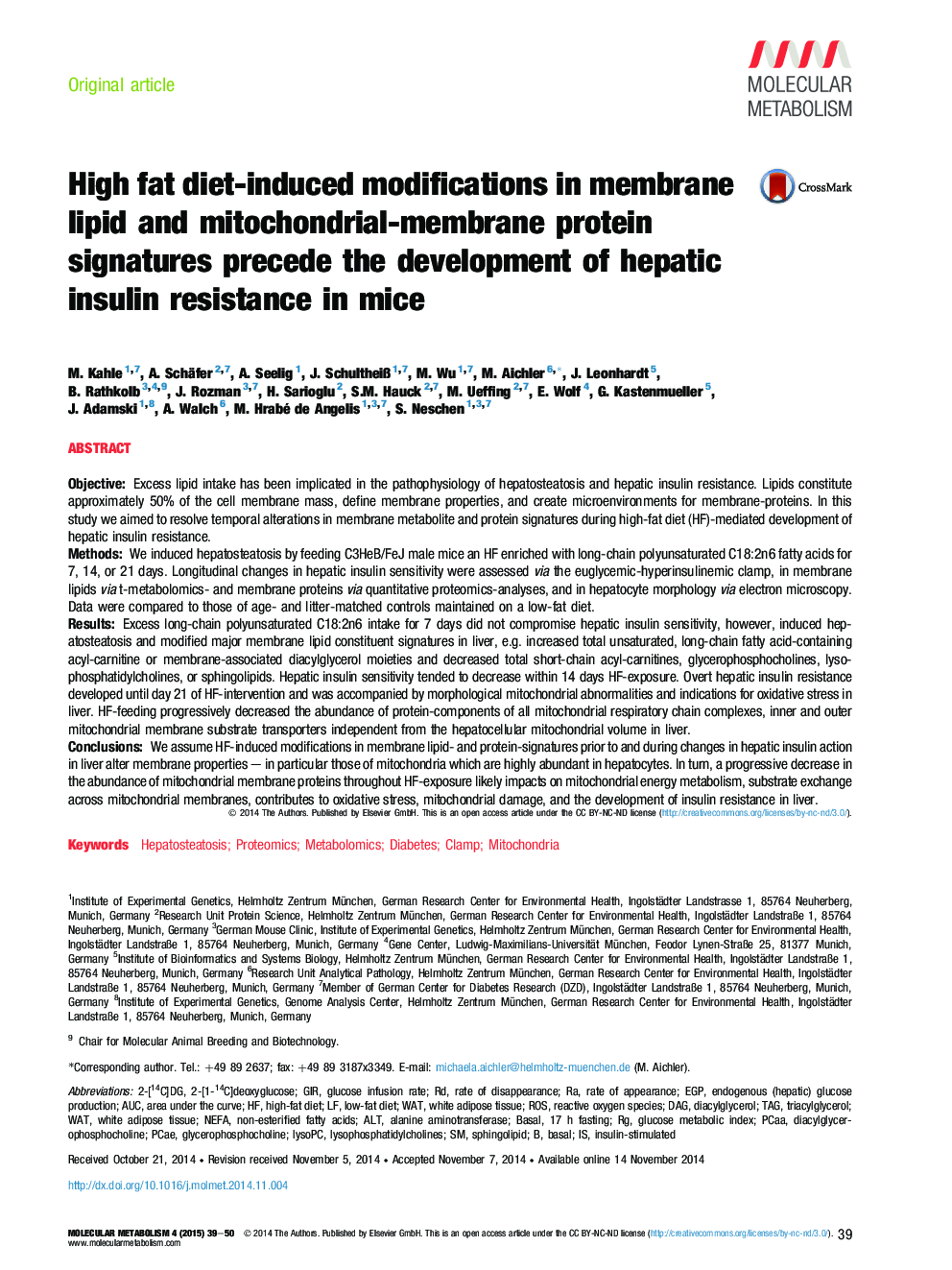| کد مقاله | کد نشریه | سال انتشار | مقاله انگلیسی | نسخه تمام متن |
|---|---|---|---|---|
| 3001398 | 1180629 | 2015 | 12 صفحه PDF | دانلود رایگان |
ObjectiveExcess lipid intake has been implicated in the pathophysiology of hepatosteatosis and hepatic insulin resistance. Lipids constitute approximately 50% of the cell membrane mass, define membrane properties, and create microenvironments for membrane-proteins. In this study we aimed to resolve temporal alterations in membrane metabolite and protein signatures during high-fat diet (HF)-mediated development of hepatic insulin resistance.MethodsWe induced hepatosteatosis by feeding C3HeB/FeJ male mice an HF enriched with long-chain polyunsaturated C18:2n6 fatty acids for 7, 14, or 21 days. Longitudinal changes in hepatic insulin sensitivity were assessed via the euglycemic-hyperinsulinemic clamp, in membrane lipids via t-metabolomics- and membrane proteins via quantitative proteomics-analyses, and in hepatocyte morphology via electron microscopy. Data were compared to those of age- and litter-matched controls maintained on a low-fat diet.ResultsExcess long-chain polyunsaturated C18:2n6 intake for 7 days did not compromise hepatic insulin sensitivity, however, induced hepatosteatosis and modified major membrane lipid constituent signatures in liver, e.g. increased total unsaturated, long-chain fatty acid-containing acyl-carnitine or membrane-associated diacylglycerol moieties and decreased total short-chain acyl-carnitines, glycerophosphocholines, lysophosphatidylcholines, or sphingolipids. Hepatic insulin sensitivity tended to decrease within 14 days HF-exposure. Overt hepatic insulin resistance developed until day 21 of HF-intervention and was accompanied by morphological mitochondrial abnormalities and indications for oxidative stress in liver. HF-feeding progressively decreased the abundance of protein-components of all mitochondrial respiratory chain complexes, inner and outer mitochondrial membrane substrate transporters independent from the hepatocellular mitochondrial volume in liver.ConclusionsWe assume HF-induced modifications in membrane lipid- and protein-signatures prior to and during changes in hepatic insulin action in liver alter membrane properties – in particular those of mitochondria which are highly abundant in hepatocytes. In turn, a progressive decrease in the abundance of mitochondrial membrane proteins throughout HF-exposure likely impacts on mitochondrial energy metabolism, substrate exchange across mitochondrial membranes, contributes to oxidative stress, mitochondrial damage, and the development of insulin resistance in liver.
Journal: Molecular Metabolism - Volume 4, Issue 1, January 2015, Pages 39–50
